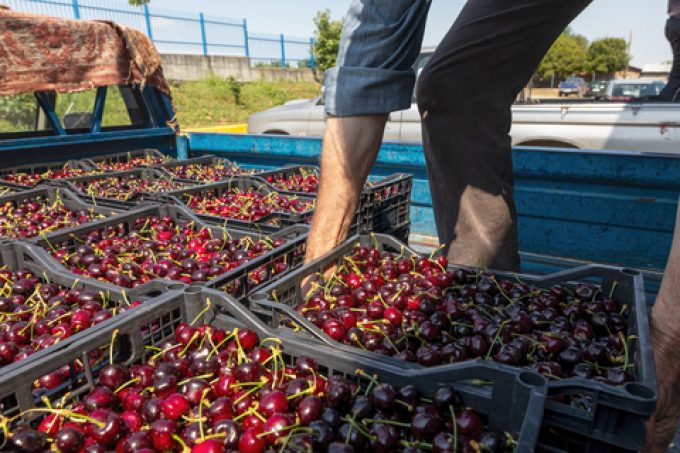Uplift for Hong Kong's air cargo hub status, while container port declines
Hong Kong government plans to further boost the SAR’s international aviation hub status – in ...
GM: RAISING THE ROOF GGM: IN FULL THROTTLE GZIM: MAERSK BOOST KNIN: READ-ACROSSMAERSK: NOT ENOUGHMAERSK: GUIDANCE UPGRADEZIM: ROLLERCOASTERCAT: HEAVY DUTYMAERSK: CATCHING UP PG: DESTOCKING PATTERNSPG: HEALTH CHECKWTC: THE FALLGXO: DEFENSIVE FWRD: RALLYING ON TAKEOVER TALKODFL: STEADY YIELDVW: NEW MODEL NEEDEDWTC: TAKING PROFIT
GM: RAISING THE ROOF GGM: IN FULL THROTTLE GZIM: MAERSK BOOST KNIN: READ-ACROSSMAERSK: NOT ENOUGHMAERSK: GUIDANCE UPGRADEZIM: ROLLERCOASTERCAT: HEAVY DUTYMAERSK: CATCHING UP PG: DESTOCKING PATTERNSPG: HEALTH CHECKWTC: THE FALLGXO: DEFENSIVE FWRD: RALLYING ON TAKEOVER TALKODFL: STEADY YIELDVW: NEW MODEL NEEDEDWTC: TAKING PROFIT

After two successive years of sub-standard crops, this year’s cherry harvest in the US provided more fruit for export – but “other factors” continued to weigh on airfreight volumes.
Airlines had been anticipating the cherry season, traditionally one of the boosters of airfreight volumes from the North American west coast to markets in Asia and Europe. In 2021, a heatwave decimated the crop in the Pacific north-west, and a cold and wet spring the following year produced the smallest harvest in over a decade.
This year, growers reported a stronger crop, with larger fruit, and projections were for about 23 million 20lb boxes (equivalent to 207,000 tonnes) being shipped to Asia.
“It was good compared with the past two years, but not with average crop sizes,” said Chris Connell, SVP perishables North America at Commodity Forwarders, a Kuehne + Nagel subsidiary.
While overall volumes were up, the quality of the crop turned out somewhat patchy, and overseas buyers were less enthusiastic than anticipated. Mr Connell attributed this largely to the strength of the dollar and that some key Asian markets were emerging from lockdowns.
“All markets have been a bit price-sensitive,” he said.
Moreover, Taiwan’s Food and Drug Administration said about 6,000 tonnes of US cherries entering the country failed to meet food safety requirements this year, according to one report.
The Vietnamese market has been continued to show growth, but is a relative newcomer to the international cherry market. By and large, the market is mature, which leaves growers and packers few alternatives if their clients show diminished appetite for their cherries, said Mr Connell.
He added that volumes to Europe had been on a decline for years, as retailers and importers there were sourcing more cherries from Turkey and Spain. The UK has emerged as another origin, leveraging indoor growing capacity.
These tougher overseas markets have prompted US cherry growers to focus more on the domestic market, which is a safer bet, albeit less profitable. But it has helped that US demand has remained healthy, said Mr Connell.
Historically, transpacific carriers have boosted their freighter operations for the cherry season. This year exporters also were faced with limited belly capacity to Asia, notably China. Cathay Pacific added a weekly freighter frequency to the Pacific north-west to accommodate increased loads, but overall freighter activity showed no significant surge.
“There were some charter opportunities from the Pacific north-west to China, but there wasn’t a lot of charter activity. Freighters were affected by lower yields from Asia to the US,” explained Mr Connell. Passenger flights between the US and Europe had rebounded, providing ample lift for cherries across the Atlantic, he added.
Cherries were not the only US perishables exports that have been limping this year. The blueberry harvest started late and ended early, Mr Connell reported.
“Every crop has had quality issues,” he added.
After years of drought, last winter’s high snow volume and the rains this year have produced short-term problems for growers and exporters, but he maintained that long-term prospects were positive.
Comment on this article